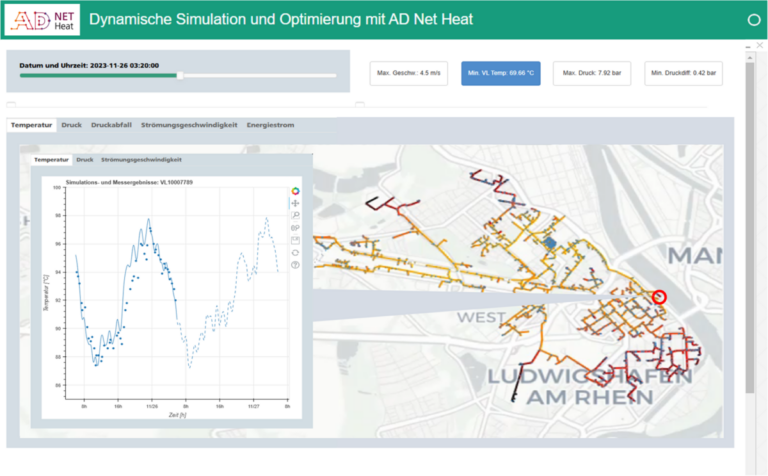Researchers in Germany have developed a simulation software tool that visualizes heat flows in existing district heating networks and can predict load peaks. It can also be used in planning and commissioning new networks.
A research project led by the Fraunhofer Institute for Industrial Mathematics (Fraunhofer ITWM) has developed a simulation software tool for visualizing heat flows in district heating networks.
The AD Net Heat project combines information on the lengths and cross-sections of pipes and the number and position of supply and consumption points of district heating networks with weather data, sunlight exposure and typical consumption profiles at certain times, in addition to supply temperature and supply power.
The researchers say the tool can do that simulate the dynamics of a network as a whole, make predictions about heat flows and demand at consumption points during operation, provide key indicators regarding points at the edge of the network, such as trouble spots, and provide alerts for critical operating conditions. It is also possible to optimize the grid control and send the information back to the control center.
“Municipal utilities and energy suppliers can use this data to observe and manage the network, with all its different dynamics, in real time,” says Fraunhofer ITWM researcher Matthias Eimer. “Peak loads at different times of the day are also detected and compensated at an early stage.”
The tool can also take into account in operational planning major events taking place in the community that require heating, such as a concert or a trade fair. Once the event location and estimated heat demand have been entered into the software, AD Net Heat will simulate heat transport and display consumption forecasts.
Fraunhofer says the tool can also help with the planning and commissioning of new networks. The software is able to calculate the distribution of heat flows and the expected consumption of a new network once the topology of a network has been defined, including the return points for fluctuating energy sources such as solar heat and industrial residual heat.
It is also able to work through different scenarios for the new network, such as consumption at different times of the day or year, differences in the placement of generators and structural changes such as new transmission lines.
Eimer says this could help municipal utilities and district heating providers take steps toward a climate-neutral heat supply that conserves resources and reduces costs. “First, simulation in the digital twin enables maximum use of renewable energy sources when they are available. And secondly, the heat demand forecasts are very accurate and reliable,” Eimer explains. “This makes it possible to make the pipe cross-sections slightly smaller, which saves material.”
The researchers say they are now working to make the user interface simpler and clearer for users at heat suppliers and planning agencies.
This content is copyrighted and may not be reused. If you would like to collaborate with us and reuse some of our content, please contact: editors@pv-magazine.com.


